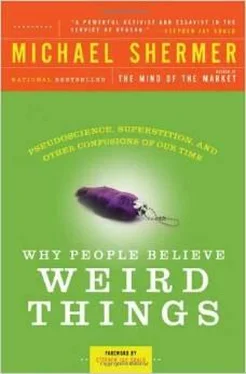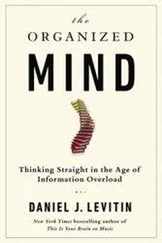The similarities between these testimonies are one of the driving forces behind religions, mysticism and spiritualism. But while believers view the accounts as proof of life after death, scientists have found rational explanations for them.
Some hallucinations caused by chemicals are remarkably similar to reports of near death experiences. “Out of body” sensations can be induced by dissociative drugs such as ketamine or LSD. People feel they’re leaving their body, and they might even watch themselves from across the room.
The fact that we have receptors in our brains for these artificially produced chemicals means that our bodies must produce them as well. So we can deduce that near-death out-of-body experiences are probably similar to those that people experience on drugs.
The common vision of the tunnel can also be explained. Many people who’ve experienced this tunnel (and some of those who haven’t) believe it’s a transition between life and death. However, the tunnel isn’t a gate to heaven. We can actually explain it biologically. It’s caused by abnormal cell activity in the visual cortex – the area of the brain where information from the retina is processed.
Hallucinogenic drugs or a lack of oxygen can interfere with the nerve cells in the visual cortex by making them fire at different rates. This produces lines and patterns that move across the cortex. The brain “sees” these patterns as spirals, and then connects this information with the bank of familiar images we store in our memories, to try to understand what they are. The nearest thing we have to these moving spirals is a tunnel – hence all those tunnels to the afterlife.
“Alien abductions” are really the result of psychological and physical stress.
Stories of alien abductions are very widespread. How can so many witnesses be lying? Actually, they aren’t, it’s just that certain experiences can cause hallucinations that are so real that the affected person confuses reality and fantasy.
Many alien encounters are actually caused by not getting enough sleep. “White-line fever” is a sleep disorder that’s often experienced by truck drivers. Lack of sleep combined with the monotony of driving (and seeing the endless white lines on the road) leads to hallucinations, which can be quite extreme.
People who’ve experienced white-line fever report seeing bushes that turn into animals, or mailboxes that look like people. Of course, this sort of sleep deprivation can also lead to hallucinations about aliens.
Moreover, when people don’t know they’re hallucinating, these sightings get stored in their memory. Even after they recover, they remember the hallucinations as real experiences.
This is especially true when people report that they “remember” their alien encounter many years after experiencing it. This often happens under hypnosis, or after waking up at night.
These are simple explanations for this. During sleep or hypnosis, memory and fantasy can sometimes mix so much that it’s impossible to sort them out afterward.
Alvin Lawson, a psychologist, once put some students into a hypnotic state and told them they had been kidnapped by aliens. After the students woke up and were asked about their alien kidnapping, they could provide very detailed stories – all untrue.
Rare mental sleep states known as hypnagogic and hypnopompic hallucinations also account for many alien reports. In these states, sleepers believe that part of their dreams are real in the first minutes after they wake, which is very disorienting. Psychologist Robert A. Baker, who analyzed these hallucinations, encountered many subjects who were convinced they had been carried away by martians.
Modern witch hunts and cults are just like those in the Dark Ages.
In the Dark Ages, “witches” were hunted down and various cults were founded in the name of religion. We don’t call people witches any more, but people still go on witch hunts today for no rational reason.
In fact, medieval witch hunts have the same characteristics as certain modern crazes. From time to time, some kind of mass hysteria is triggered. People get falsely accused of a crime, the media goes wild and people become convinced that an innocent person is guilty.
This happened in 1944, in the small town of Mattoon, Illinois. A woman claimed that a stranger anesthetized her legs by spraying some sort of gas on them. After a newspaper reported her story, more cases popped up and were heavily publicized. Newspapers ran headlines like “Anesthetic Prowler on the Loose,” and the offender became known as the “Phantom Gasser of Mattoon.”
Investigations soon revealed that the entire story had been made up. The police spoke of people’s “wild imaginations” and the newspapers characterized the story as “mass hysteria.”
This is exactly how witch hunts in the Dark Ages started. Someone made a false accusation, others became scared, the truth became irrelevant, and hysteria spread.
The flipside of the witch hunt is the cult – when one unusually charismatic person is elevated above others, and their political or philosophical views accepted without criticism. Cults have no basis in science or rational judgment either, as their followers try to justify every command their leader issues.
These characteristics are prevalent in modern cults like Scientology – a litigious new age religion with millions of followers. It emphasizes belief and unquestioning obedience, and functions as a religion, focusing on faith rather than any sort of actual science. Followers of the atheist novelist Ayn Rand have a similarly hysterical devotion to their figurehead: they think they are rational “Objectivists,” but won’t tolerate any questioning of Rand.
Immortality is scientifically unlikely.
In 1994, Frank J. Tipler released a book called The Physics of Immortality, which initially received a lot of attention. It might be tempting to believe we have proof that immortality is real, but Tipler’s pseudoscientific theory is untenable.
Tipler believed that by the far distant time when the universe collapsed on itself, humans would have invented a computer that could use the energy thrown up by that catastrophe to virtually recreate every human being from data stored in their memories. Mankind would be saved in a new virtual universe by a godlike computer.
Tipler’s book includes a scientific appendix where he tried to explain his theory with mathematical formulas, and suggested how sufficient scientific progress could be made. However, even if it is possible that his theory could come true, many rational arguments can be ranged against it.
The most important thing is that no one knows if all the prerequisites for building an all-knowing computer will ever be met. Science enables steady progress, but today we’re nowhere near building a computer with the power to store an almost infinite amount of information, and we don’t know if we’ll ever be.
Tipler’s theory also relies on many hypotheticals. The construction of his super computer lies far in the future, meaning many things need to occur in just the right way for it to happen. If one of these hypotheticals doesn’t occur just as Tipler predicts, the computer might not be constructed at all.
So, although it’s technically possible that the godlike computer will be built one day and we’ll all be reborn in eternity, at the moment Tipler’s theory is not coherent enough to be taken seriously.
. Clearly, creationism has nothing to do with scientific method or scientific research. In fact, it’s a complete rejection of the laws and conduct of science.
Creationism goes against the very concept of science.
Читать дальше












